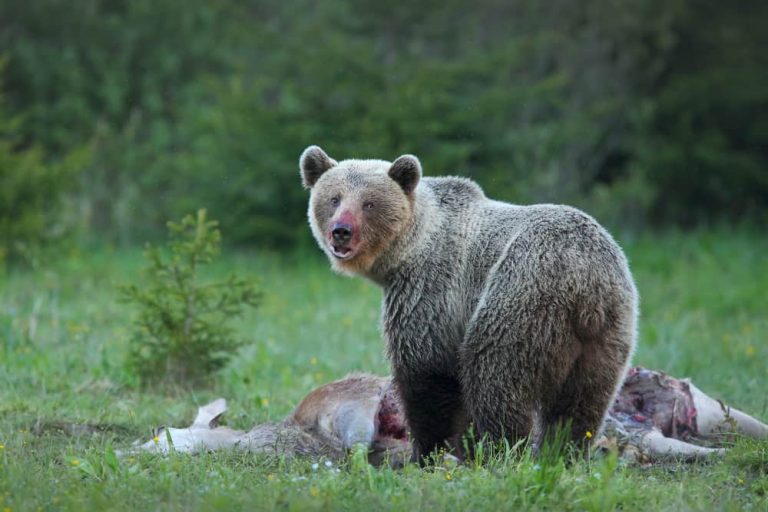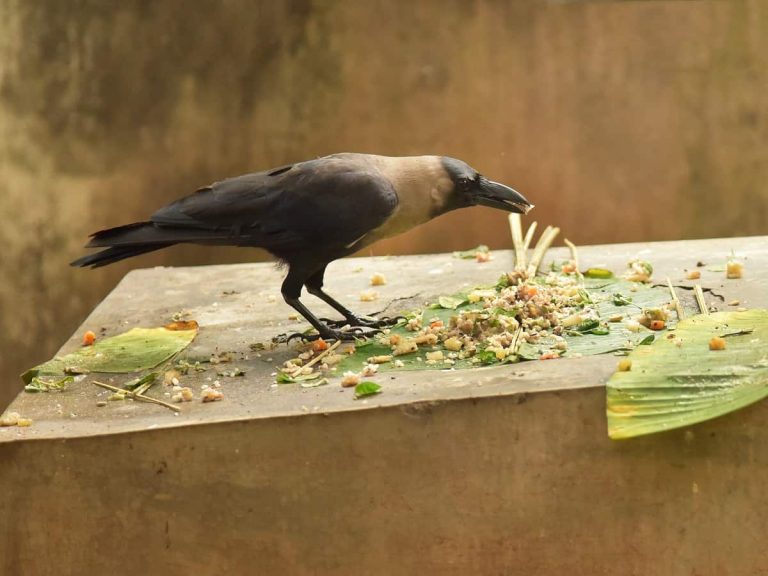What Do Lizards Eat in the Desert (How Can They Survive With So Little Sustenance)
If you ever find yourself in a scorching desert, there is one animal that will undoubtedly be present: lizards. These cold-blooded reptiles are found all over the world as they are very adaptable.
But how do they sustain themselves in such hostile environments? Life is scarce in deserts, mostly because of the unfavorable conditions for life. Water is basically non-existent, leaving animals to have a difficult time finding water and food. Yet, some species of lizards thrive in deserts.
We must make a distinction first. There are many lizard species around the world. Not all of them can survive in the desert. And different species live in different deserts.
In this article, we are going to see what lizards eat in the desert, and catalog them based on the environment they live in.
The Desert Environment
When you read desert, you are probably thinking about the endless expanses of sand. You’d only be half right, though. There are 2 types of desert: hot and cold deserts.
Cold deserts are in polar regions. They are cold, but have a lot of precipitation. That’s because they’re near oceans that don’t freeze solid during winter months.
Hot deserts lie closer to the equator and experience higher temperatures year-round, with very little rainfall throughout history. However, recently this has been changing as glaciers melt, releasing more water into the atmosphere.
Deserts are environments hostile to life. With little to no vegetation, these areas receive scarce amounts of rain. In fact, that’s the definition of a desert. A place that gets less than 250mm of water per year.
Temperatures can be extreme as well; they often reach over 100 degrees Fahrenheit (40 Celsius) during the day and plummet below 32 F (-18 C) at night. Deserts can be hot or cold.
These conditions are unfavorable for most animals. That’s why only species with extreme adaptation capabilities populated the deserts.
Editor’s note: Lizards only live in hot deserts. This is because they can lose their ability to move when it’s too cold. They—like other reptiles—can’t regulate their own body temperature. A typical lizard can’t move if the temperature drops below 5.5 Celsius degrees. Sure, desert lizards can survive lower temperatures (desert nights are especially cold), but they won’t have any energy to move or hunt.
Desert Lizards and Their Diet
Almost all desert lizard species feed on insects; termites make up the bulk of their diet. The humidity they create underground is perfect for many tiny insects like termites to thrive. Some lizards eat fruit occasionally, others have diets based mostly on plants. But these live in areas where fruit actually grows.
The diet of lizards in the desert will vary depending on their species, but there are some generalities that can be made about most desert-dwelling reptiles:
- Most tend to eat smaller insects such as crickets or meal worms
- Some also include snail and small invertebrates in their diet
- Some eat vegetation and fruit; this is more common among species that live near oases
- There are also lizards that feed mostly on eggs, such as the great desert skink
Desert lizards that feed on termites will often burrow under their mound and eat them from inside out. This also means they have to compete with other predators, such as ants or beetles. Some species of lizard found in deserts are monitor lizards. These large reptiles prey not only on insects, they also eat mammals, eggs and other lizards if the opportunity arises.
There are many types of lizards that live in the desert. These evolved in different ways to deal with the harsh conditions. There are 2 types of lizards that live in the desert: diurnal and nocturnal.
Warning: the lists in the coming section aren’t meant to be comprehensive. They’re just
Diurnal Lizards
The first group of lizards that lives in the desert are called diurnal (meaning they like sunlight). These species can find refuge in vegetation or among rocks during night time, when it is too cold for them. They typically eat insects and plants; some even drink water from dew drops on leaves.
Examples of diurnal desert lizards include:
- Giant Gila Monster—The Giant Gila Monster (B) Is the largest lizard in North America. This species lives mostly on insects, but it will also eat small mammals, and sometimes birds. The Gila Monster has an interesting adaptation to help it stay cool during summer; its blood vessels are close to the surface of its skin. As a result, when these creatures get too hot, they will secrete blood from their mouths and nostrils. This is a defense mechanism that makes them look extremely scary to predators (and humans).
- Desert Iguana—The Desert iguana lives in the desert of Southern California and Arizona. It’s diurnal like most other lizards found in deserts and spends most of its day basking in the sun. It is mostly herbivorous, with a diet of bushes and flowers around its habitat. But it also eats insects and carrion when necessary.
- Texas Horned Lizard—This species is another diurnal lizard that lives in the desert. It’s native to Texas and Mexico, but you can also find it in parts of California (where there are many farms). The Texas Horned Lizard eats mostly insects, but if they get hungry enough during mating season, they will eat small snakes too. During night time this reptile buries itself under sand to protect itself from the cold.
- Uromastyx—This lizard lives in the hottest areas of the planet. It prefers to bask in the sunlight with over 30°C outside. This is a genus of lizards that live in Africa and Asia (for example, you can find them in the desert of Sahara). They eat mostly vegetation, but they will also feed on insects when the opportunity arises (especially termites).
For their diet, they will eat any insects and plants they can find during daytime. In winter time, when it’s too cold for them to be active at night, these lizards might need a specific diet in order to survive without hunting or mating. This is because food isn’t as common as in their environment; insects and vegetables can be scarce when it’s too cold.
Fun fact: Most desert lizards are solitary hunters because food is scarce. But there is a species of lizard in the Mojave desert that live as a family.
Nocturnal Lizards
The second group of desert lizard is the nocturnal one, meaning they are active at night time when it’s cool outside. They don’t need to bask in the sun to warm up, making them more adapted for deserts.
Some of the most famous nocturnal lizards include:
- Horned Lizard—The horned lizard has a unique adaptation: it can squirt blood from its eyes! This helps scare off predators and humans during mating season, when males inflate their throats to look bigger (and scarier).
- Leopard Gecko—The Leopard Gecko is a nocturnal lizard that lives in deserts around the Middle East. It’s not very common to find it outside its natural habitat, but you can also see them in some pet stores (mainly because they’re easy to breed).
Even though they are nocturnal, these species still need to warm up at the beginning of their activity period. They will typically do so by basking in the sun for a couple of hours before hunting or mating.
The desert night lizard species are expert climbers. They are carnivore and eat tiny insects, spiders, termites, and other arthropods.
Some species have evolved to not need sunlight at all; they are entirely nocturnal. These are typically large species, such as the leopard gecko and crocodile skink (which is native to Australia).
They are omnivores, which means they eat both plants and animals. This includes rodents, insects, spiders, snails or even other lizards. These species will typically search for food during the first hours of darkness, as that-s when they are most active.
How can Desert Lizards Survive with so Little Sustain?
Lizards have adapted in different ways to the harsh conditions of their environment.
Different species employ different tactics for survival. Some will hibernate during winter, because the temperature would be too low for them to survive through the season.
Lizard bodies are incredible at water retention. That’s why they can survive for long periods of time with little water and food.
Compare them to us. Humans waste an awful lot of water throughout the day by sweating and peeing. Conversely, lizards can’t sweat because of their scales that seal the water inside. And their pee—unlike ours—isn’t a mixture of water and urates, it’s basically fully urates.
Conclusions
The diversity among desert lizards is astounding. There are tens of species that thrive in such hostile environments. And they are spread among hot deserts all over the world. This proves that lizards are very adaptable animals.
In fact, Iguanas are starting to adapt to the cold weather. Now, while lizards are mostly harmless to us (expect for the poisonous one), they could turn problematic for the ecosystem at large.
Most lizards are satisfied with eating tiny insects and crunching leaves. They are excellent at retaining the nutritional elements in their food, so they can survive for months without drinking or eating. This makes them exceptional at living in areas where food is scarce, like deserts.
The insects that live in the desert include fire ants, sphinx moths, carpenter bees, termites, scorpions, and spiders. Each species of lizards has its preference, but most of them eat termites as the bulk of their diet. Plus the occasional munch on leaves when they find it.
Also Read:






